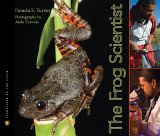 Bad Science: Quacks, Hacks, and Big Pharma Flacks Ben Goldacree
Bad Science: Quacks, Hacks, and Big Pharma Flacks Ben GoldacreeGoldacre is seriously pissed off at the lack of scientific literacy in the media and general public. Luckily, he’s rather funny in his rage. (To get a taste, check out his Guardian column by the same name)
He looks at several issues, mostly related to health, how they’re marketed, why we buy the claims, and how horribly wrong it all is. Along the way, he teaches the reader how to understand things so they can cut through the crap and know what lies and lines they’re being fed.
It’s a great mix of condemning the system and teaching you how to buck the trend. It’s also a bit disheartening-- we fall for this stuff SO EASILY. Even I do. But, now when I hear a new health claim, I find myself really thinking about it-- the most basic question be--does this even make SENSE, and then looking at how studies were constructed.
Goldacre looks a lot at alternative therapies, the claims they make and how they’re utter crap. But he also looks a lot of mainstream medicine and they claims THEY make--especially Big Pharma (which he explores a lot more in his new book, Bad Pharma: How Drug Companies Mislead Doctors and Harm Patients). He has a few things about the beauty industry--many of the lotions and potions contain ingredients "clinically proven to X" even though those studies usually had the vitamin ingested, not applied topically--enough that I want an entire book on it.
But, the best part is, Goldacre’s voice. His writing is clear and easy to understand (even if you don’t have a degree in science) and is just plain funny. He feels very strongly about this-- it’s not a dispassionate book, but a plea for us to think about what’s going on and to stop falling for clever lies and disguised gimmicks.
Oh! Also, I learned that carrots do not improve eyesight. Turns out that old chestnut is WWII propaganda. The Allies had invented radar and the Nazis couldn't figure out how British pilots could see so well at night. In order to mislead them (last thing England wanted was Nazis with radar) they said that their pilots just ate a lot of carrots and it helped their eyesight.
An Outstanding Book for the College Bound.
Book Provided by... my local library
Links to Amazon are an affiliate link. You can help support Biblio File by purchasing any item (not just the one linked to!) through these links. Read my full disclosure statement.










